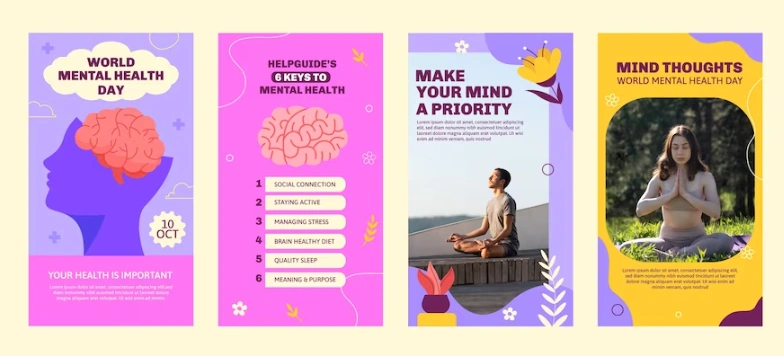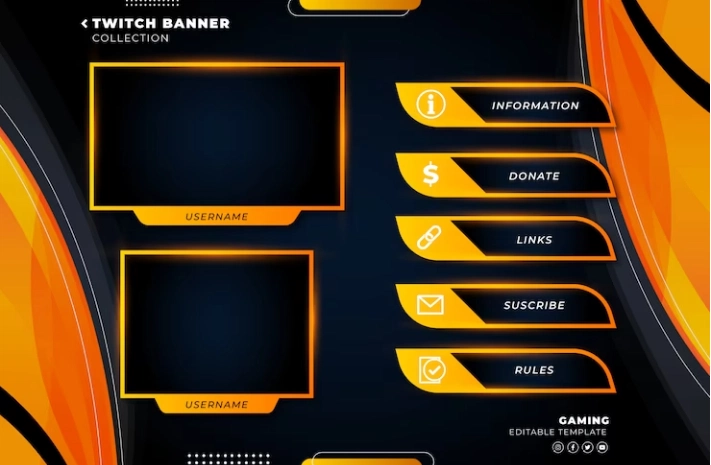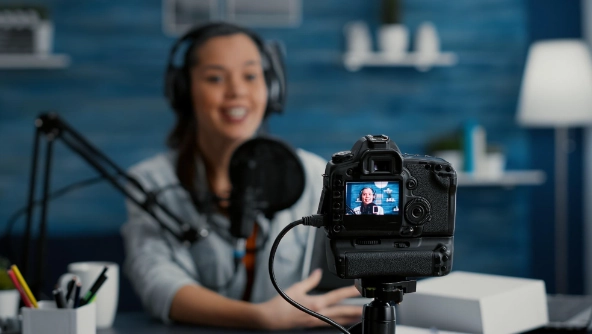Advertising, whether programmatic or any type of advertising, is an omnipresent force in our daily lives. From viral TV ads and street billboards to online ads and social media posts, we are constantly exposed to advertising messages that try to capture our attention and persuade us to buy products, services or ideas. Behind this avalanche of ads is a fascinating and complex world of strategies designed to influence our decisions and behaviors. This has a name: advertising psychology. You want to know more? Keep reading.
What is advertising psychology?
Advertising psychology, also known as advertising psychology, is a discipline that delves into the human mind and its relationship with advertising. In simple terms, it is the science that seeks to understand how people react to advertisements and how they influence their purchasing decisions.
Imagine you’re watching an ad on TV or scrolling through your social media feed. Advertising psychology is responsible for unraveling what is happening in your mind at that precise moment. Why are you attracted to a particular product? Why does that ad make you laugh or feel nostalgic? How is it that a simple advertisement can make you remember a brand for a long time?

Do you want to start monetizing in streaming now?
Reach Gen Z through major streaming platforms!
What does advertising psychology consist of?
It consists of being the secret behind the advertisements that captivate us, excite us and convince us to buy products or services. To understand better, let’s talk about its key elements.
Understand the audience
The basis is to deeply understand the audience you are addressing. This means analyzing your wants, needs, values and behaviors. What motivates this audience? What worries you? What makes them happy? By answering these questions, advertisers can create ads that resonate with their target audience.
The psychology of persuasion
At the heart of advertising psychology is the study of how to persuade. This is where concepts like social persuasion, persuasion theory, and motivational psychology come into play. Advertisers use these insights to craft messages that generate interest and persuade audiences to take action.
Memory and recognition
Advertisements must be memorable. Advertising psychology dives into how our brains store and retrieve information. Why do some advertisements remain in our memory for years? How do you make a brand instantly recognizable?
Emotion vs. logic
It also explores the interplay between emotion and logic in purchasing decision making. Why do we let ourselves be carried away by our emotions when buying a car or a brand of clothing? How do you balance logic and emotion in advertising?
Design and visual communication
The psychology of perception is essential in the. What colors, images or fonts attract attention? How can these elements be used to communicate a message effectively? Advertisements are a work of art in themselves.
Continuous research
Advertisers conduct constant research to measure the effectiveness of their ads and adjust their strategies based on the results. Feedback and data analysis are fundamental pillars in this discipline.
Successful advertising psychology strategies
Advertising psychology is not only a science that studies the mysteries behind persuasion in advertising, but also an arsenal of proven strategies for designing effective advertising campaigns . Here we explore some of the key strategies that have proven to be instrumental in the success of marketing campaigns:
Anchor strategy
It is based on the idea that people tend to base their decisions on an initial reference value, known as an “anchor.” This is achieved by showing a higher price first and then offering discounts. For example, a product may be advertised as “was $100, now $50.” The consumer perceives the discount as a great deal due to the anchoring of the original price.
Urgency and scarcity
Advertisements that include phrases such as “limited time offer” or “few units left” encourage quick decision making as consumers fear missing out. This strategy is based on the psychological principle that people tend to value more what they perceive as scarce or at risk of depletion. Urgency and scarcity generate a sense of immediate need.
Effect of social norm
The social norm effect is based on people’s tendency to follow the behavior of others. Testimonials from satisfied customers, reviews and sales figures are examples of how this strategy can be used to influence consumer perception and decision. When consumers see that others have had a positive experience with a product or service, they are more inclined to follow suit.
Reciprocity
This is based on the idea that people have a natural tendency to return favors or gifts. Brands use this strategy by offering free samples, exclusive discounts, or valuable content to consumers. They thus create a sense of obligation in consumers to consider the brand favorably and ultimately take action, such as making a purchase.
Primacy and recency
This strategy is based on the theory that people tend to remember better the items they see first (primacy) and those they see more recently (recency). In advertising, it can be applied by placing the most important message or key offer at the beginning and end of an advertisement. This maximizes the likelihood that viewers will retain relevant information.
Color psychology
Colors have a significant impact on people’s emotions and perceptions. Each color evokes specific emotions and sensations. For example, red is commonly associated with urgency and passion, making it a popular choice for promotions and calls to action. Blue conveys confidence, calm and professionalism, making it appropriate for brands seeking to establish consumer trust. Yellow suggests happiness, optimism and youth, and is used in advertisements that seek to convey a feeling of joy and energy. Brands use specific colors in their branding and advertising to influence how the public feels about their products or services.
Stories and narrative
Stories allow brands to create an emotional and personal connection with consumers. A well-told story captures the audience’s attention, transmits values and generates empathy. By identifying with a narrative, consumers feel closer to it and are more likely to remember and prefer it.
Personalization
The personalization strategy is based on the principle that people most value experiences and products that adapt to their individual needs and preferences. Brands collect consumer data, such as purchase histories or online browsing preferences, to deliver personalized content, recommendations and offers. Thus increasing the relevance of advertising and improving the user experience, and therefore the probability of conversion.
Learn more about advertising for brands
Humor and emotion
Ads that make you laugh or generate positive emotions, such as happiness or love, tend to be more memorable and effective. Emotions create an emotional bond with the brand and encourage a positive response from the consumer. Humor makes ads more engaging and compatible as people enjoy fun and entertainment.
Authority influence
This strategy is applied when a brand decides to partner with celebrities, recognized experts or opinion leaders who support its products or services. The credibility of the authority figure is transferred to the brand, increasing consumer trust and purchase intention.
Examples of brands that have known how to use advertising psychology
Some examples of large companies that apply advertising psychology in their campaigns are:
Coca Cola
Coca-Cola has employed color psychology in its branding and packaging, using bright red to create an emotional association with happiness and celebration. Additionally, its “Share a Coke” campaign encourages interpersonal connection and friendship, tapping into the human need for belonging and social connection.
Apple
Apple is a master at creating a desire for its products through exclusivity and innovation. Use the psychology of scarcity by launching products in limited quantities, to create a sense of urgency and a desire to purchase them before they are sold out. It also explores the psychology of aspiration by positioning its products as symbols of status and lifestyle.
McDonald’s
McDonald’s uses color psychology and simplicity in its branding. The color red and yellow are associated with speed and appetite, encouraging impulsive buying. Additionally, their advertisements often highlight the fun and happiness associated with fast food, appealing to consumers’ positive emotions.
Nike
Nike has tapped into the psychology of motivation and self-improvement in its “Just Do It” slogan. This phrase seeks to inspire people to overcome obstacles and achieve their goals, creating an emotional connection with the brand. In addition, it uses the power of identification by associating its products with elite athletes, this makes consumers feel part of an exclusive group of achievers.
Dove
Dove has used the psychology of self-image and self-esteem in its “Real Beauty” campaign. This campaign challenges traditional beauty standards and promotes acceptance of people’s natural beauty. Dove has proven that by addressing emotional and personal issues, you can create a deep connection with your audience and build long-term brand loyalty.
Volkswagen
Volkswagen uses the psychology of nostalgia and simplicity in many of its advertisements. What their advertisements do is evoke memories of bygone eras and highlight the simplicity of their vehicles. This creates a feeling of authenticity and reliability, contributing to the longevity of the brand.
Amazon
Amazon uses the psychology of convenience and instant gratification in its marketing strategy. Offering fast shipping and access to exclusive content, your Prime membership satisfies the human need for immediate gratification and convenience. Additionally, it uses personalized recommendations based on user behavior.
Disney
Disney appeals to the psychology of nostalgia and emotion in its marketing. The brand evokes happy childhood memories and promotes magic and fantasy. It also uses iconic characters that create deep emotional connections with audiences.
Coca-Cola (again)
Coca-Cola uses emotional association with its Christmas campaign. Each year, its Christmas ads create a warm and festive atmosphere, evoking emotions of love, joy and family unity, thus reinforcing the brand’s image as an essential part of Christmas celebrations.
Starbucks
Starbucks has been able to take advantage of the psychology of experience and belonging. Their cafes are designed to provide a welcoming and comfortable experience, building customer loyalty. Additionally, they personalize customer orders, creating a feeling of belonging to an exclusive community of coffee lovers.

Want to start advertising on stream?
This is your chance to reach Generation Z through the leading streaming platforms!
Conclusion
In a reality saturated with ads, advertising psychology is an essential tool for brands and marketers. It’s no longer just about creating eye-catching ads; It’s about deeply understanding your audience and how they relate to your advertising messages. Advertising psychology reminds us that behind every ad is a team of experts working to understand and harness our motivations, emotions, and desires.
Ultimately, this discipline continually challenges itself, always researching, testing and innovating to reach consumers in the most effective way possible.
To conclude the article, I recommend that you enter the Streamion blog and continue reading: Guerrilla marketing , advertising spots and SEM campaigns . They are super interesting topics and are very related to these strategies!







